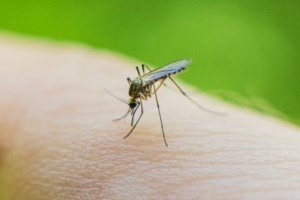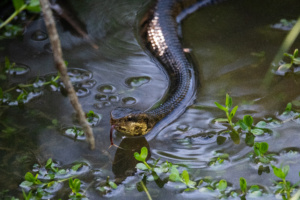Bites, Stings & Summer Things:
From ants to snakes, experts break down
how to safely enjoy the outdoors this season
Information courtesy of | Texas A&M Health, Marketing & Communications
Photos Courtesy of | iStock
As summer begins and families head outdoors, they’re not the only ones on the move—creatures that bite and sting are out and about, too. Warmer and wetter conditions can bring out critters like mosquitos, fire ants, spiders and snakes that could put a damper on your summer mood.
Glenn Barnes, DNP, RN, EMT-P, NHDP-BC, FWEM, FAWM, clinical associate professor at the Texas A&M University College of Nursing and former U.S. Army Special Forces Green Beret, is double board certified in wilderness medicine and now teaches healthcare professionals how to provide care in austere environments. In his line of work, he sees plenty of insects and animals that could pose a danger or discomfort to humans.
Be prepared. Preparedness is the most important factor when out in nature—and the best form of preparedness is knowing what to watch for, Barnes said.
The Texas Poison Center Network lists potentially dangerous animals in Texas along with their potential effects. Although some identification guides may suggest looking at a snake’s pupils or a spider’s markings, Barnes cautions against getting too close and provoking the animal.
When venturing into heavily wooded or especially buggy areas, Barnes recommends treating clothing and tents with Permethrin, in addition to using a standard insect repellent. Products containing at least 30% DEET are the most effective, especially for those prone to bug bites. For individuals looking to reduce chemical exposure, natural repellents can work but may require more frequent application.
Gayle Ponder, MD, chief of medical staff at Texas A&M University Health Services recommends maintaining a first-aid kit for outdoor adventures. “It never hurts if you’re going to be on a long hike to have some antiseptic wipes, some antihistamine, even some hydrocortisone,” she said. “That way, if you do get a bite, you can instantly treat it.”
Know when to seek medical care. To minimize bites or stings while spending time in wooded or bushy areas, Ponder recommends wearing long pants tucked in to your socks and a breathable, long-sleeved, sun-protective shirt. When bites or allergic reactions do occur, Ponder recommends monitoring for concerning effects. Watch for increased redness, puffiness, heat or other signs of infection, which may require medical attention and possible antibiotic treatment. Seek medical attention immediately for any anaphylaxis symptoms—difficulty breathing, nausea or vomiting—especially when experiencing a first-time reaction or in the absence of an EpiPen.
Do not attempt to suck out the venom or apply a tourniquet to the wound if a bite is suspected to be from a venomous animal or spider, such as a rattlesnake or brown recluse spider. Rather, Barnes advises seeking medical attention immediately and allowing medical professionals to treat the wound. In the event of a snake bite, call the hospital on the way there, so appropriate anti-venom can be prepared.
Have a lifeline. Before venturing into remote areas, Barnes advised ensuring communication channels. “You need to have multiple ways of communicating,” he said. “Have walkie talkies that’ll reach a ranger station, a satellite phone and a cell phone. And make sure you have spare batteries or battery chargers to make sure you always have power to electronic devices.”
Of course, the best form of defense is avoiding dangerous situations altogether, Barnes said, and keep hands and feet out of low- or impeded-visibility places. “Let wildlife be wild,” he said. “Don’t pet the snakes. Don’t pet spiders. And understand that we’re in their habitat and it’s their home. Try not to disturb it if you can, and you’ll be fine.”
###
ABOUT TEXAS A&M HEALTH Texas A&M University Health Science Center (Texas A&M Health) comprises five colleges and schools (dentistry, medicine, nursing, pharmacy and public health), integrated University Health Services, several research centers and institutes, and numerous outpatient clinics with a shared mission of advancing health care for all. We serve the state and beyond with campuses and locations in Bryan-College Station, Dallas, Houston, Round Rock, Kingsville, Corpus Christi, McAllen and Navasota. Learn more at health.tamu.edu or follow @TAMUHealth on X (née Twitter).



